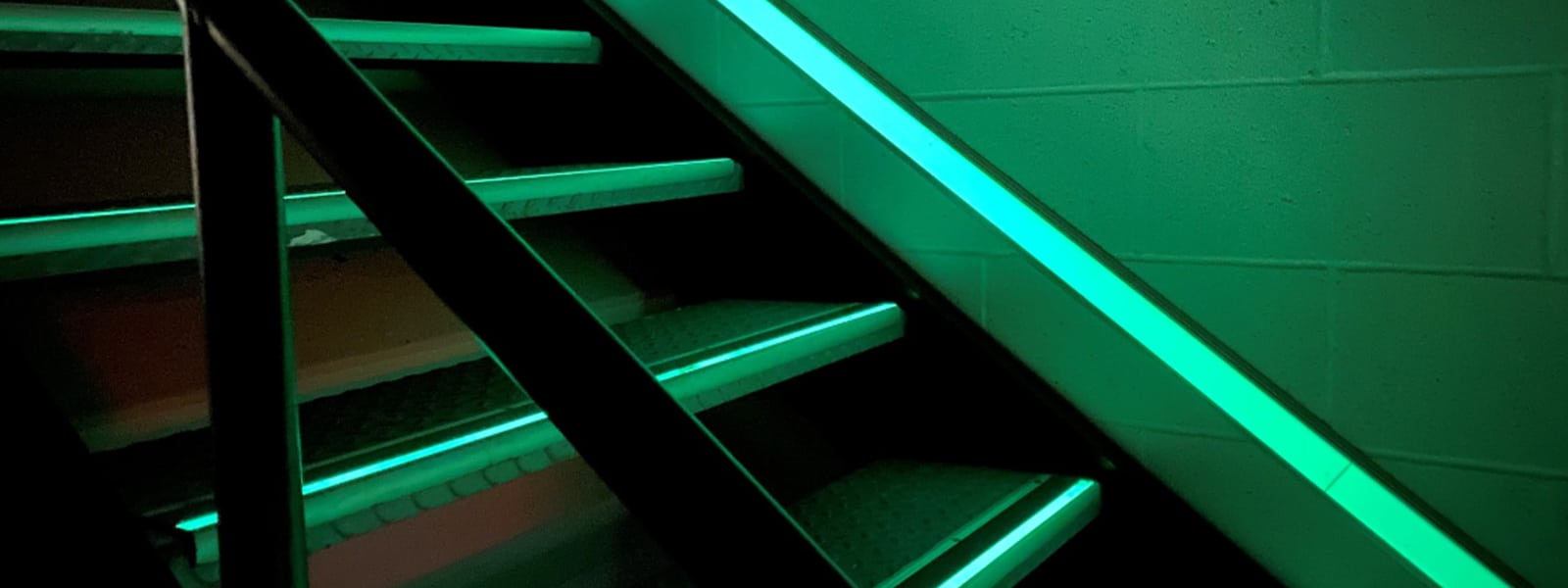
Like many industries, ours was forever changed by the events of September 11th, 2001. The signage industry implemented the requirement of luminous egress path markings in most buildings seven stories or taller.
New safety measures included illuminated markings on walls, floors, stairs, and doors that aid in the safe evacuation of a building. Environmental graphics had a waking call for a vital factor in its success: implying safety. In emergency scenarios, these markings have the potential to save lives.
Photoluminescent material is an excellent tool for use in large buildings and campuses. With photoluminescent material, light refraction occurs as phosphors dispersed throughout the material become energized. This stores the light and gives a vibrant, 24/7 glow without the need for electricity.
International Building Code (IBC) standards are updated often to standardize where these luminous egress path markings are required to optimize visibility and identification. IBC standards and codes are updated regularly and it’s important to stay up to date with new code developments on their website.
Important changes to The IBC Standards as a result of 9/11:
- Elevators required in high-rise buildings more than 120 feet tall to allow more efficient transport of emergency personnel and equipment
- Additional stairways for high-rises more than 420 feet tall.
- In lieu of an additional stairway, an optional enhanced elevator can be used for emergency evacuation.
- More robust fireproofing for buildings more than 75 feet tall.
- Elevator and exit stairway shafts having impact-resistant walls.
- Self-luminous exit pathway markings in all exit stairways; Used when primary and secondary lighting fails.
- Radio coverage systems in buildings to better enable emergency personnel with communication inside and outside buildings in cases of emergency response.
All of these changes have one simple goal in common: to preserve the safety of occupants in emergency situations. The requirements for the installation of photoluminescent material follow signage’s principles of directing, informing, and identifying.
Photoluminescent material must be placed in a flowing manner to help someone navigate an unknown area with limited visibility. Areas of risk and destination need to be reinforced in a way that correlates with the characteristics of the building.
Photoluminescent Signage Providers
Signage has the power to enhance the customer’s perception of a space. The value of safety positively influences the customer’s relationship with the brand. There are a plethora of companies that fulfill the needs of photoluminescent safety markings in the warehouse, office, and beyond. This company offers a variety of bumper guards, egress path markings, and various photoluminescent signage.
Oakhurst Signs and Graphics understands the need to deliver affordable, high quality signage solutions. Along with these needs, our experts know that signage gives an authoritative presence for safety and confidence in navigation. Customers and employees alike subconsciously understand successful signage and safety guides. Photoluminescent materials are an essential aspect of your signage system to ensure the safety of your visitors.
